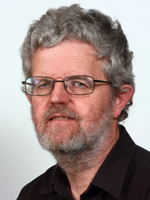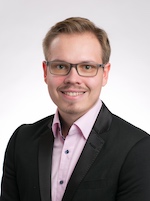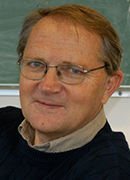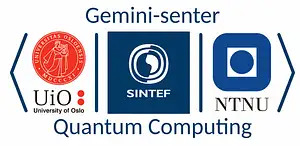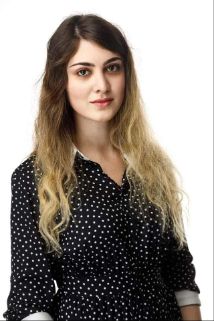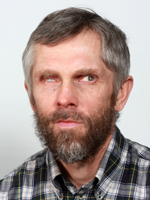Events - Page 8
Consider the singularity C^4/(Z/2), where Z/2 acts as the matrix diag(-1,-1,-1,-1). This singularity is special, in that it does not admit a crepant resolution. However, it does admit a so-called noncommutative crepant resolution, given by a Calabi-Yau 4 quiver. The moduli space of representations of this quiver turns out to share a lot of similarities with moduli spaces of sheaves over Calabi-Yau fourfolds, and it turns out that we can reuse techniques from studying moduli of sheaves to define and compute invariants of this moduli space of representations. In this talk, I will explain how these invariants can be defined, and give conjectures about the forms of these invariants. This talk is based on joint work with Raf Bocklandt.
The Thoralf Skolem Memorial Lecture 2022
This mini-workshop provides young analysts in Norway with an arena to present their research and interact with their peers.
Workshop at University of Oslo
QOMBINE seminar talk by David Jaklitsch (Hamburg)
Doctoral candidate Alexander Lobbe at the Department of Mathematics will be defending the thesis Machine Learning for the Stochastic Filtering Problem for the degree of Philosophiae Doctor.
Ingeborg Gjerde (Simula Research Laboratory) presents joint work with Ridgway Scott (University of Chicago).
Abstract: Airflow around airplane wings is characterized by a wide range of flow scales, making it highly challenging to capture numerically. From a simulation viewpoint, the following questions are still being actively investigated: Why do airplanes fly? Can one reliably simulate the lift and drag of an airplane wing? In this talk, I will provide no good answers to these questions. Instead, I want to talk about some interesting results I've stumbled into tangentially, including:
- (Nonlinear) kinetic energy instability analysis, also referred to as Reynolds-Orr instability
- Slip boundary conditions and their connection to D'Alembert's paradox
- Stokes' paradox and its connection to weighted Sobolev spaces. I will show numerical results computed for flow around a cylinder, which serves as a proxy for flow around an airplane wing. In particular, I will talk about the impact of the friction boundary condition on the drag force and flow stability. Finally, I will comment on how these results might be interpreted in view of: New Theory of Flight, J. Hoffman, J. Jansson, C. Johnson (2016), Journal of Mathematical Fluid Mechanics.
A three-day school for master and PhD students in physics, mathematics and computer science who would like to learn about quantum computing.
In this talk, I will go through my past research before joining UiO, particularly at The University of Texas at Austin. This will include a brief introduction to the development of stable and adaptive finite element methods for challenging problems in engineering science. Second, I will focus on modeling efforts in coastal ocean hydrodynamics, including a review of the underlying physics and assumption and a review of the current state-of-the-art. I will also introduce several related to my focus of storm surge modeling and how the models are used by stakeholders beyond academia.
As a consequence of the S-duality conjecture, Vafa and Witten conjectured certain symmetries concerning invariants derived from spaces of vector bundles on a closed Riemannian four-manifold. For a smooth complex projective surface X, a satisfying mathematical definition of Vafa-Witten invariants has been given by Tanaka and Thomas. Their invariants are a sum of two parts, one of which can be defined in terms of moduli spaces of stable vector bundles on X. Focusing on this instanton part of the VW invariants one can ask how it changes under blowing up the surface X. I will discuss joint work with Oliver Leigh and Yuuji Tanaka that answers this question.
I will explain how a recent “universal wall-crossing” framework of Joyce works in equivariant K-theory, which I view as a multiplicative refinement of equivariant cohomology. Enumerative invariants, possibly of strictly semistable objects living on the walls, are controlled by a certain (multiplicative version of) vertex algebra structure on the K-homology groups of the ambient stack. In very special settings like refined Vafa-Witten theory, one can obtain some explicit formulas. For moduli stacks of quiver representations, this geometric vertex algebra should be dual in some sense to the quantum loop algebras that act on the K-theory of stable loci.
On the occasion of Jørund Gåsemyr retiring earlier this year, we invite you to a half-day seminar celebrating his contributions to statistics over many years.
When a body (such as an offshore structure and ship) exists on the surface of the ocean, it is influenced by waves. At the same time, waves are deformed by the body. This interaction is essential for considering the problems of bodies in waves. Although these are complicated systems, the theory is well-established based on linear potential flow, and this explains these phenomena very well.
In the seminar, some applications of potential theory-based analysis are shown, including the seakeeping of a ship, multi-bodies interaction, and elastic plate in waves. In addition, the progress of the study of wave-ice interaction in a marginal ice zone is presented which is a current work in UiO.


